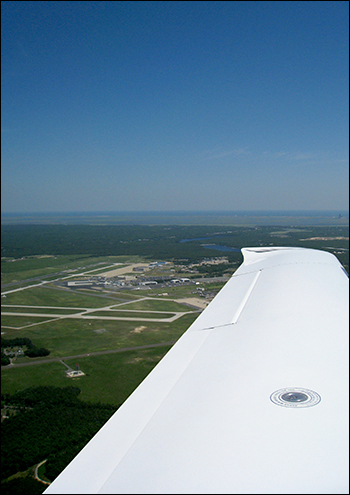Subscriber question:
"For a standard single-engine piston airplane, how far from the runway should you be on downwind? I see all kinds of patterns at my home airport and it drives me crazy." — Steve B.
Bob:
 “Think about the goal of this process: to get the aircraft safely on the ground without interfering with other traffic. To me, that means staying as close to the runway as possible in the traffic pattern. Usually, a half-mile offset will accomplish this goal. How can we determine what a half-mile looks like? How long is the runway? Use it as a guide to determine distance.
“Think about the goal of this process: to get the aircraft safely on the ground without interfering with other traffic. To me, that means staying as close to the runway as possible in the traffic pattern. Usually, a half-mile offset will accomplish this goal. How can we determine what a half-mile looks like? How long is the runway? Use it as a guide to determine distance.
To me, discipline is the key in the traffic pattern. There is an altitude to maintain—maintain it. There is a correct speed for your aircraft—maintain it. And there is a ground track that will allow an efficient flow of traffic for landing. Fly the ground track precisely so as to not confuse other aircraft. Wide or extended downwind legs only frustrate other pilots and can be dangerous. If we have engine problems in the pattern, we certainly want to land on the runway.
Standardization is another important quality to integrate into our traffic patterns. Establishing a flow in the traffic pattern will free us up to keep track of what’s going on around us. Configure at the same point each time (gear, flaps, power) and you will develop a picture and feel for the pattern. There’s a lot going on, and the more we free ourselves up for changes, other traffic, and other distractions, the better our traffic patterns will become.”
Learn how to fly a perfect pattern with our Pilot Exercise Program manual.
Which of these common errors on downwind leg do you think is the greatest detriment to SAFETY?
(Feel free to explain why below.)
